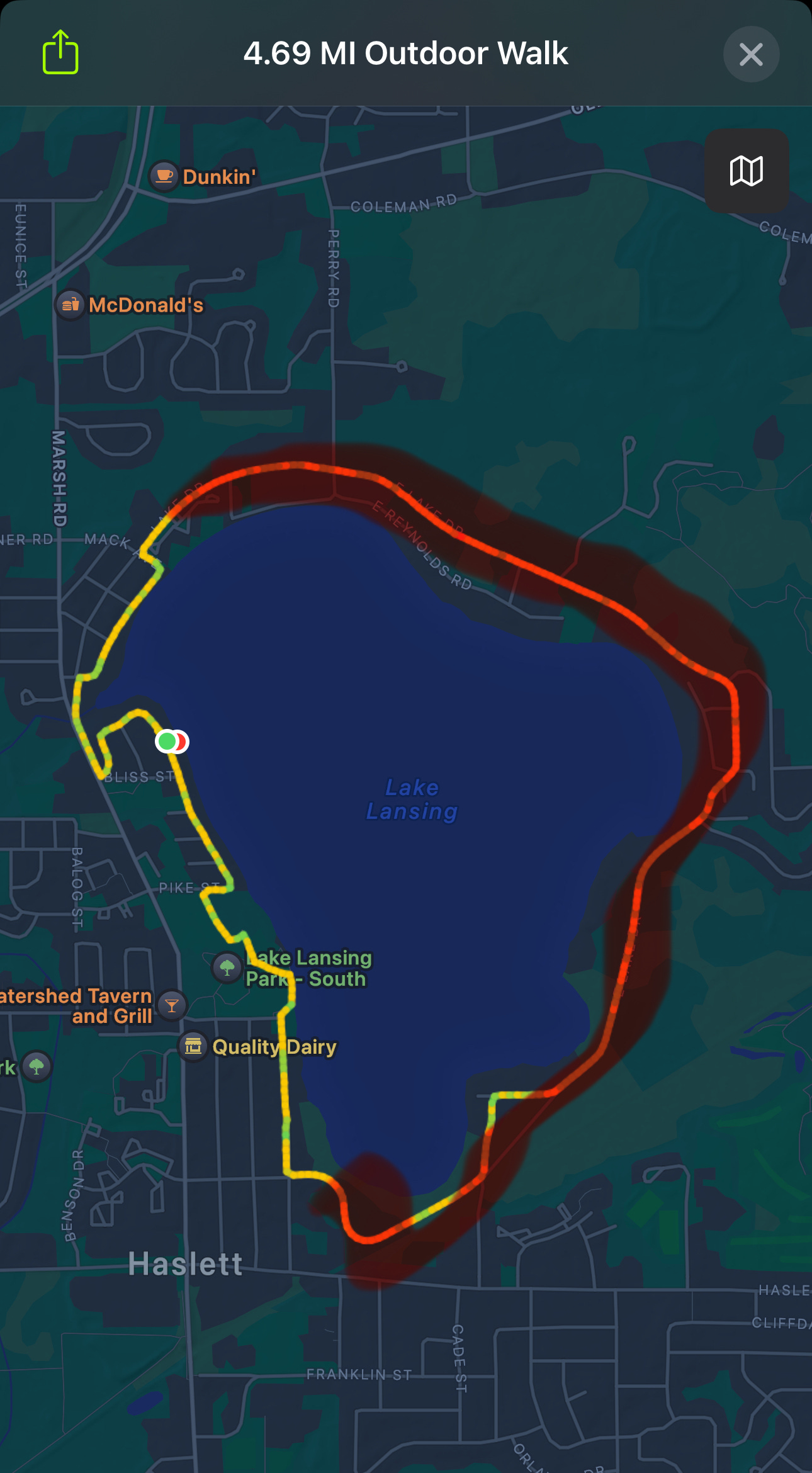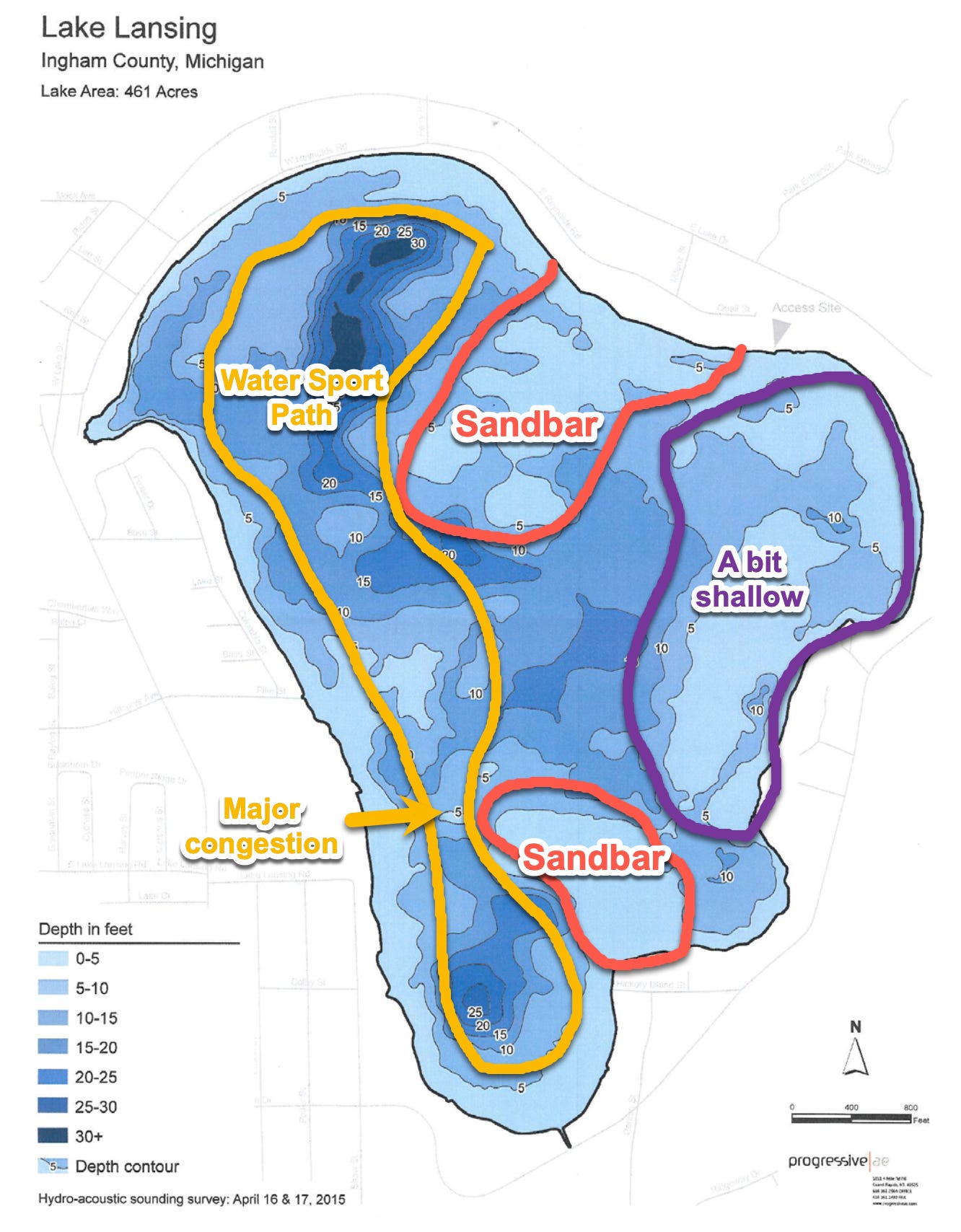My three-point plan to increase the property values around Lake Lansing by 50%
There’s only one large all-sport lake (allows for watersports) around Lansing, Lake Lansing. It has a terrible reputation because it used to be dirty, and that was not entirely wrong. As a watershed lake, about 90% of its water comes from storm runoff, which means everything from lawn fertilizer to road salt and oil once flowed straight in from the surrounding area. That runoff built up sediment and pollutants over decades, making the lake seem small, shallow, and murky. But it is not like that anymore. A major dredging project in 1978, ongoing lake management, and better stormwater practices have made the water cleaner now than it has been in decades.
At about 461 acres, it is actually larger than most lakes in Michigan. When you look at the distribution of inland lakes statewide, the vast majority are under 100 acres, so by comparison, Lake Lansing is in the upper tier of size. It is our one and only lake. Obviously, I am biased because I live on it, but here is my bold three-point plan to improve the perception of the lake, increase its usability, return it to a more natural state, and increase property values around it by 50 percent.
1. Making Lake Lansing’s Pathways Safe for Everyone
First, improving the safety of the running and bike path around the lake. In Haslett, we are blessed with an absolutely amazing park system and River Trail. I think the North Lake Lansing Park is one of the most beautiful in the area, maybe in the entire state, and I think it is completely missed by most people. The trails through that park are glorious, and you go through at least two or three different types of forests when you're out there. It's absolutely spectacular.

But one area where we need improvement is the running and bike path around the lake. A lot of it is on Lake Drive, and while it's a beautiful drive, it’s incredibly risky. You basically run/walk on the shoulder of the road and the shoulders are not very big, and it’s very windy, so drivers often don't see the runner until the last minute.
I joke with my friends that running is probably the thing that will save my life, but it will also be the thing that kills me, because I'll probably get hit by a car on that run. It's a joke, but there's definitely some truth in it.
There’s been more than one time that I've looked up and seen a driver coming at me, distracted and not looking at the road.
The other issue is that the path isn't safe for children, so we can't let our seven-year-old ride around the lake because it's just too dangerous. If we expanded the bike lane and maybe put in some barriers between it and the road, I think that would increase the use of the path. It would make it more accessible for children and people with disabilities. And that connection point would allow it to link up with the River Trail, Lake Lansing Park North, Lake Lansing Park South, and many other parks.
It would also connect to the larger River Trail, giving access to East Lansing, Lansing, Old Town, Holt, Mason, & pretty much everywhere in the area.
2. Dredge Lake Lansing to an Average Depth of 12 Feet
Next point: dredging Lake Lansing. Lake Lansing is a notoriously treacherous lake because it has so many shallow points. The marinas in the area joke about how many people damage the propeller on their boat on Lake Lansing. It has been dredged in the past, but I think we should do it again. Because Lake Lansing has an average depth between four and ten feet, light penetrates all the way to the bottom, which allows weeds to grow. That means the lake has to be treated to kill off the weeds and vegetation to make it usable.
If we were to dredge Lake Lansing to an average depth of 12 to 15 feet, light wouldn't be able to penetrate all the way to the bottom, meaning that weeds wouldn't grow as much, and we wouldn’t have to treat the lake so often. I believe this would help return it to a more natural state and reduce the use of hard chemicals that tend to accumulate at the bottom of the lake.
One challenge for dredging, besides the cost, is deciding where to put the dirt. One suggestion might be to create an island in the middle of the lake with the dredged material, keeping it within the same lake community. This would increase the usability of the lake and make it even more amazing. I have to confess, I really think Lake Lansing is amazing, and it’s a bummer how much of a bad rap it gets.
Because Lake Lansing only has a few narrow channels of deep water, speedboats generally accumulate and go back and forth between the South Park swimming area and the north end. This creates congestion, because all the larger boats and those engaging in water sports tend to operate in the same area. It also means that oftentimes boats cannot go the legally required counterclockwise direction around the lake, especially when towing a skier, because it’s simply not possible.
3. Attract Younger Residents and Visitors to the Lake
Once those two things are done, I think this would attract more young people from surrounding communities and from MSU to use the lake. Within a few generations, the general negative perception about the lake could be replaced with a positive one. That would mean more people wanting to use it, and more people wanting to live on it.
I think these three steps would conservatively increase the property values around the lake by 50%. They would make the lake much more desirable, more natural, more beautiful, and more usable for a wider variety of water sports. And they would increase water quality because of fewer weeds, which would require fewer chemical treatments.




